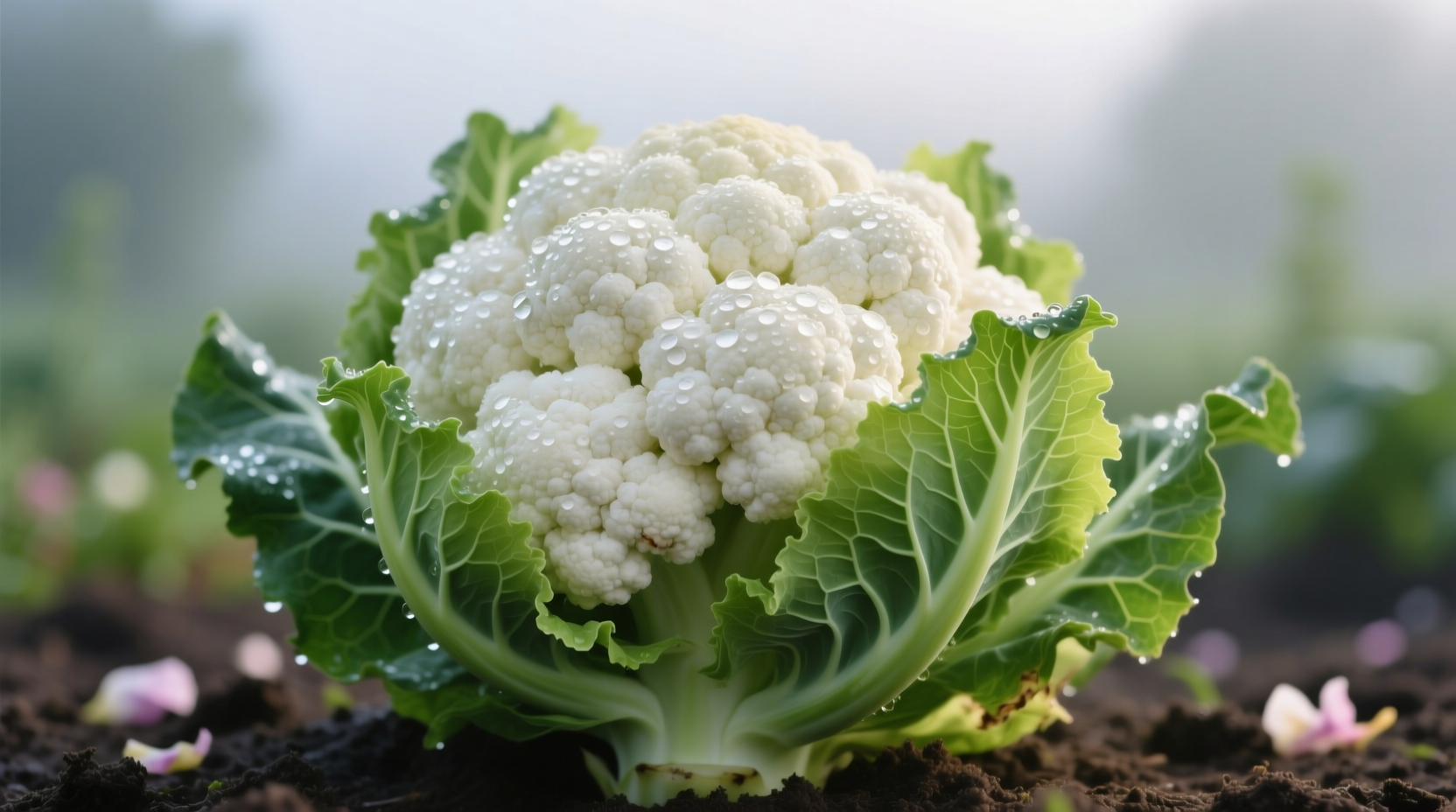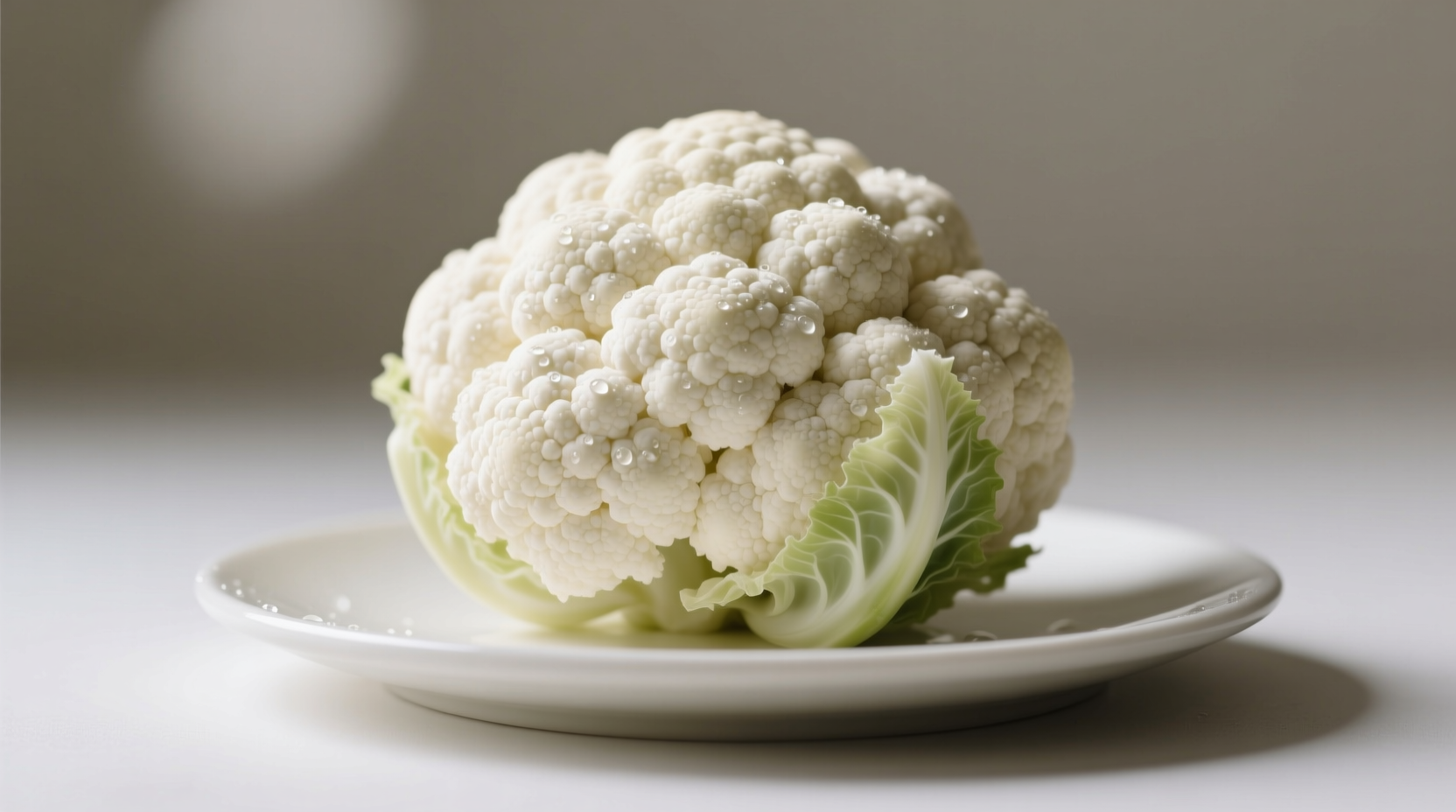What Exactly Does Cauliflower Look Like?
When you search for a picture of cauliflower, you're likely trying to identify this versatile vegetable correctly. Cauliflower (Brassica oleracea var. botrytis) belongs to the cruciferous family alongside broccoli and cabbage, but has distinctive visual characteristics that set it apart.
Key Visual Characteristics of Fresh Cauliflower
Understanding what to look for in a picture of cauliflower helps whether you're shopping, gardening, or identifying in recipes. The most common variety features:
- Color: Pure white curd (the edible head) surrounded by vibrant green leaves
- Shape: Dome-shaped, compact head typically 6-8 inches in diameter
- Texture: Tight, firm clusters of undeveloped flower buds (florets)
- Weight: Feels heavy for its size (1-2 pounds for medium heads)
- Freshness indicators: Crisp green leaves, no brown spots, firm stalk
Cauliflower Varieties Visual Guide
Not all cauliflower looks the same. Modern agriculture has developed several colorful varieties that maintain similar structure but differ in appearance. Here's how to identify them visually:
| Variety | Color Characteristics | Size Range | Seasonal Availability |
|---|---|---|---|
| Traditional White | Pure white curd, sometimes with pale yellow tints | 6-8 inches diameter | Year-round, peak fall to spring |
| Orange Cauliflower | Vibrant orange throughout the curd | Slightly smaller than white varieties | Late summer to winter |
| Purple Cauliflower | Deep purple florets that turn green when cooked | Similar to white varieties | Fall through early spring |
| Green Cauliflower (Romanesco) | Chartreuse green with fractal spiral patterns | Often smaller, 4-6 inches | Early fall to late winter |
This visual comparison helps when examining a picture of cauliflower to determine variety. According to the USDA Agricultural Research Service, these color variations result from different phytonutrient concentrations - orange varieties contain beta-carotene while purple varieties get their color from anthocyanins.
How to Distinguish Cauliflower from Similar Vegetables
Many people confuse cauliflower with its cruciferous cousins. Here's what makes cauliflower unique in a picture:

- vs Broccoli: Broccoli has darker green, more separated florets with visible flower buds, while cauliflower has tightly packed white (or colored) undeveloped buds
- vs Romanesco: Romanesco has distinctive fractal patterns and chartreuse color, whereas standard cauliflower has a more uniform curd structure
- vs Cabbage: Cabbage forms dense leafy heads rather than flower clusters and lacks the cauliflower's characteristic curd
Quality Indicators in Cauliflower Images
When evaluating a picture of cauliflower for quality assessment, professional food photographers like myself look for specific markers that indicate freshness and peak condition:
According to Cornell University's College of Agriculture and Life Sciences, high-quality cauliflower should show:
- No browning or dark spots on the curd
- Firm, crisp texture visible in the floret structure
- Green leaves that appear fresh, not wilted or yellowed
- No evidence of separation between florets
- Minimal stem discoloration
These quality markers matter most when selecting cauliflower for raw consumption in salads or for presentation in gourmet dishes. For cooked applications like soups or purees, minor imperfections become less visually significant.
When Visual Identification Matters Most
Understanding cauliflower's appearance becomes crucial in several scenarios:
Gardening: Home growers need to recognize when cauliflower heads have reached optimal harvest size but before they begin to separate ("rice")
Grocery Shopping: Consumers should select heads with tight curds and fresh leaves for maximum shelf life
Culinary Applications: Chefs rely on visual quality indicators to ensure proper texture in dishes like cauliflower steaks or roasted preparations
The visual characteristics directly impact culinary performance. As noted by the University of California's Agricultural and Natural Resources division, cauliflower with loose florets or browning will have compromised texture and flavor regardless of cooking method.
Common Misidentifications to Avoid
Several vegetables are frequently mistaken for cauliflower in photographs:
- Immature Broccoli: Sometimes appears white before developing green color
- Cauliflower Fungus: A mushroom that resembles small cauliflower heads
- Artichoke Hearts: When prepared, can have similar texture but different structure
When examining a picture of cauliflower, focus on the overall structure - true cauliflower always features that distinctive compact curd of undeveloped flower buds surrounded by large protective leaves.
Practical Applications of Visual Knowledge
Recognizing quality cauliflower visually helps in multiple practical situations:
- When meal prepping, select the firmest heads for longest refrigerator storage (up to 2 weeks)
- For photography or food styling, choose specimens with perfect symmetry and vibrant color contrast
- When gardening, identify the optimal harvest window before curds begin to separate
- When shopping on a budget, recognize which imperfections affect quality versus merely cosmetic issues
FAQs About Cauliflower Identification
Here are answers to common questions about identifying cauliflower visually:











 浙公网安备
33010002000092号
浙公网安备
33010002000092号 浙B2-20120091-4
浙B2-20120091-4